-
 Looking for the best MAC foundation that suits your skin type? 10 MAC Foundations to Give Your Skin a Beautiful Dewy-Matte Complexion
Looking for the best MAC foundation that suits your skin type? 10 MAC Foundations to Give Your Skin a Beautiful Dewy-Matte Complexion
-
 10 Best Sunscreen for Oily Skin- So No More Excuse for Not Wearing It(2020) Plus a Guide on How Important Sunscreen is for the Overall Health and Appearance of Your Skin.
10 Best Sunscreen for Oily Skin- So No More Excuse for Not Wearing It(2020) Plus a Guide on How Important Sunscreen is for the Overall Health and Appearance of Your Skin.
-
 तैलीय त्वचा वाले लोगों के लिए 10 सर्वश्रेष्ठ सनस्क्रीन जो आपको त्वचा की कई समस्याओं से बचाता है। घर का बना सनस्क्रीन रेसिपी भी।(2020)
तैलीय त्वचा वाले लोगों के लिए 10 सर्वश्रेष्ठ सनस्क्रीन जो आपको त्वचा की कई समस्याओं से बचाता है। घर का बना सनस्क्रीन रेसिपी भी।(2020)
How Sunscreen Cream Works
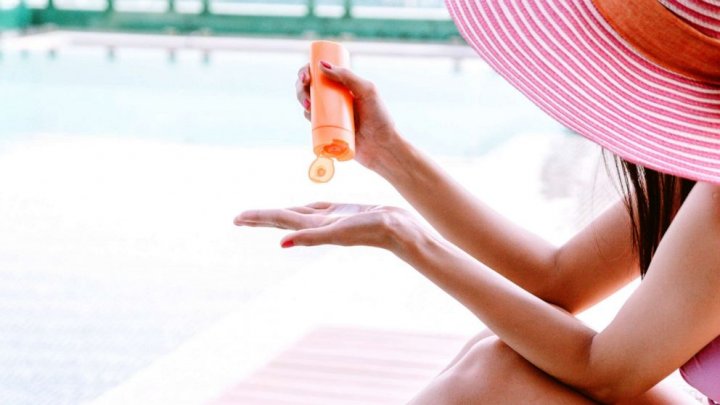
Inorganic chemicals like Zinc Oxide and Titanium Dioxide can act as a barrier between your skin and the harmful sun rays and most of the sunscreen use these ingredients in their products so that they can reflect the sunrays and these sunscreens are mostly good for sensitive skin. Then, there are Sunscreen’s which have organic (carbon-based) compounds like oxybenzone, octinoxate and homosalate etc. which absorb the harmful UV rays like a sponge before they are being absorbed by our skin, thus protecting the skin. The organic-based sunscreens are easy to apply on the skin and they don’t leave a white residue later.
Different Types of Sunscreen

Sunscreens are available from SPF 15 to SPF 50, while SPF 15 is adequate if you spend little time outdoors; you should use SPF 30 or higher sunscreen if you are spending more time outside during the day. Sunscreens are also available in water resistant and very water resistant formulae and are ideal for swimming and also protect your skin from harmful UV rays while you are sweating.
Sunscreen How to Use - We Answer All Your Questions
While different sunscreens are meant for different activities and the duration you are planning to spend outdoors, equally important is to know about how to use them.
When to Apply Sunscreen

You should use sunscreen every day; apply 15 minutes before going out in the sun so that the lotion gets enough time to gel well with your skin. Even if it’s cloudy outside, up to 80% of the UV radiations reach the ground so don't think you are safe from radiations under cover of clouds. Also, reapply after every 2 hours of exposure to the sun and right after excessive sweating or swimming (after drying the skin properly). If going for swimming during the day, apply water-resistant sunscreen lotion on the entire body.
On Which Body Parts Should I Apply Sunscreen
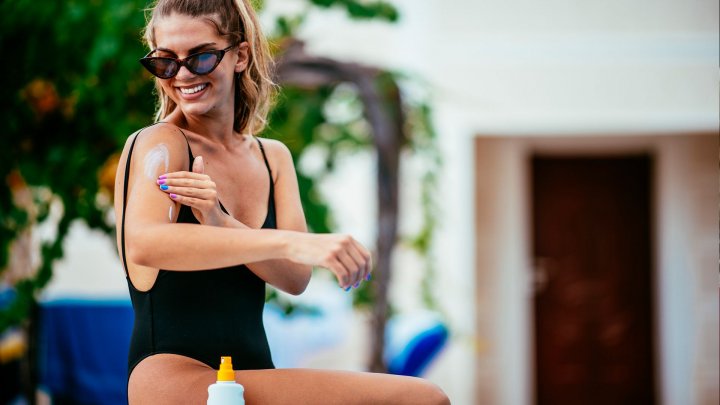
It’s recommended by skin experts to apply Sunscreen on everybody part which may be exposed to sunlight while you are out during the day, especially the easy to miss parts like back of the neck, scalp, tops of the ears, behind the knees and tops of your feet. However, if you are on trekking or any other activity where you would spend the entire day outside wearing shorts and tees etc., better to cover the entire body with a layer of sunscreen.
How Frequently Should I Use Sunscreen
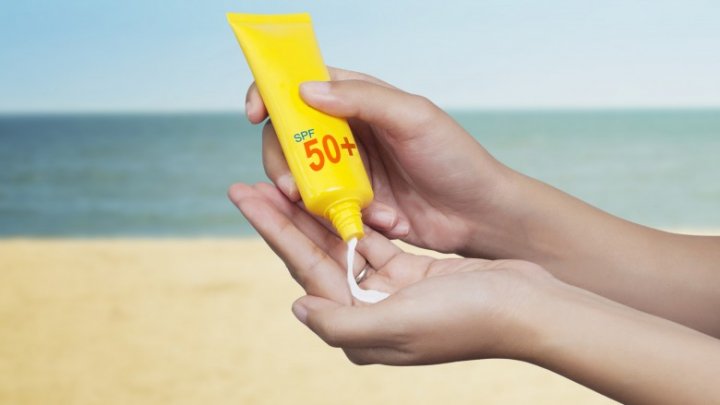
Keep in mind that SPF (Sun Protection Factor) number connotes the no. of times longer it would take before the UV rays start harming you as it would without any protection. For example, if normal sun rays start turning your skin red in 10 minutes, then an SPF 30 sunscreen will increase that time to (10 x 30 = 300 minutes) 4.5 hours. Hence, depending on the SPF of your screen and duration you have spent in the sunlight, you can choose that after how long you would like to reapply the sunscreen.
How Much Sunscreen Should I Use?

An adult requires around 25 gms of sunscreen lotion to fully protect their body. If applying on face, neck, arms and legs, you can dab about 10 gms on your palm and apply evenly. Lips are often exposed to the sun as sunscreen is not applied there; so to prevent your lips you can use a lip balm or lipstick with SPF 30 or higher.
What is the Difference Between Chemical and Physical Sunscreens?
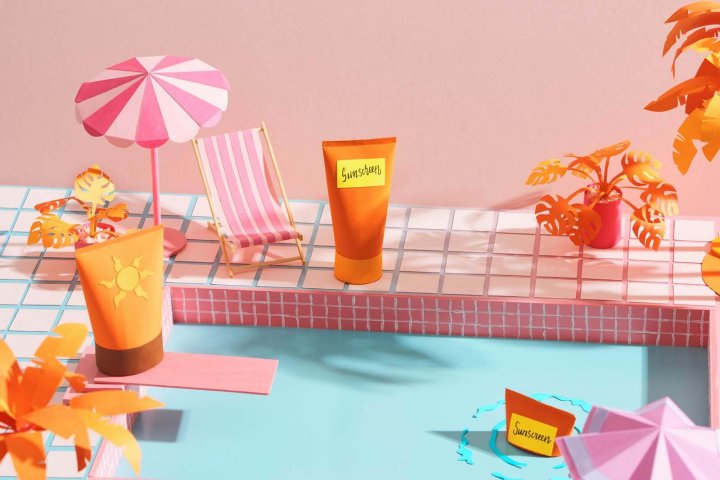
Chemical Sunscreens soak up into your skin; they absorb the UV rays falling onto your skin and convert them into heat before finally releasing them out from your body. The active ingredients like octinoxate, avobenzone and oxybenzone are found in these chemical sunscreens.
Physical Sunscreens have titanium dioxide and zinc oxide as the main ingredients. They act as blocking agents for the sunscreen as the Physical Sunscreens form a layer on your skin. This kind of Sunscreen reflects the sunrays, thus not allowing them to penetrate through the skin.
What are UVA and UVB Rays
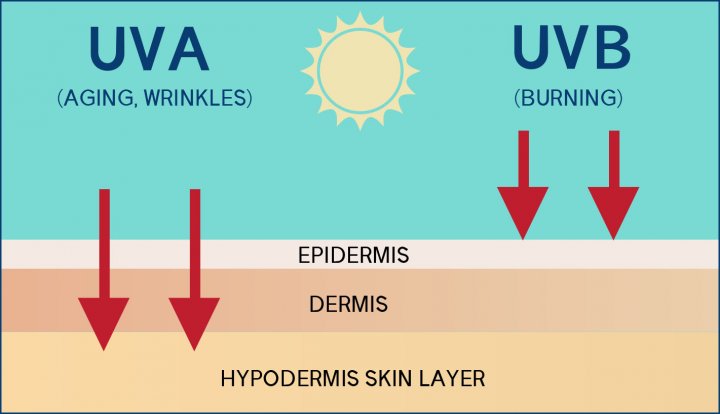
Ultraviolet rays that reach the earth’s surface are categorized into two basic types, UVA and UVB. UVA rays penetrate deeper into the skin and are responsible for premature skin ageing including wrinkle formation and age spots, these rays can easily pass through normal glass. UVA rays are also responsible for skin cancer formation and have about 500 times more presence than UVB rays in the sunlight.
UVB rays are the ones responsible for sunburn and are also the main reason behind a deadly form of skin cancer (malignant melanoma). UVB rays are blocked by window glass, but once you are out in the sunlight these rays are harmful.
Is Sunscreen Safe for Babies
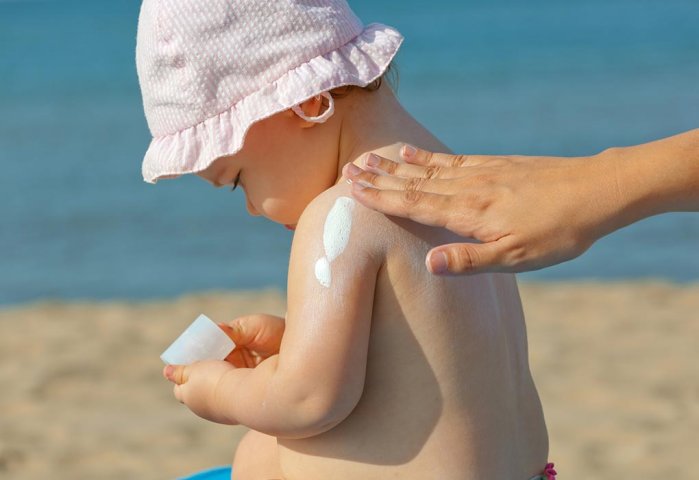
Toddlers and infants below the age of 6 months should not be exposed to direct sunlight and if you have to go out, keep shade over them as much as possible. However, babies over 6 months of age can be protected with a water-resistant, range sunscreen with SPF 30 or greater. There are special sunscreens available for babies which would cause less irritation to their sensitive skin. Apply only to the body parts which would be exposed to sunlight and reapply after every 2 hours.
Side Effect of Using Sunscreen

Few side effects like acne, burning, itching, swelling or rashes on the skin or redness in the exposed areas may appear in some people. So if using a sunscreen for the first time, then better to test it by applying on a small area of your hand and if it causes irritation, then consult your doctor to help you choose the right sunscreen for your skin.
How to Choose the Right Sunscreen

While choosing a sunscreen, make sure that it covers a range i.e. guard your skin against both UVA and UVB rays. For everyday use, an SPF 15 is sufficient and use SPF 30 or higher if you are planning to spend more than an hour outside or if you have a job which requires you to stay outdoors for longer durations. For swimming, hiking, running and outdoor sports, SPF 30 + Water-resistant sunscreen are recommended as normal sunscreen won’t last due to water or sweat in case of physical exercises.
-
 Are You Looking for a Foundation You Can Use on Daily Basis without Spending Your Entire Salary on It(2020)? Lakme India Boasts of an Entire Range of Foundations to Suit Your Skin Needs and Your Budget!
Are You Looking for a Foundation You Can Use on Daily Basis without Spending Your Entire Salary on It(2020)? Lakme India Boasts of an Entire Range of Foundations to Suit Your Skin Needs and Your Budget!
-
 Why Shell Out Hundreds on Cosmetic Sanitizers When You Can Make Your Own: How to Make Sanitizer 5 Different Ways (2020)
Why Shell Out Hundreds on Cosmetic Sanitizers When You Can Make Your Own: How to Make Sanitizer 5 Different Ways (2020)
-
 Cream Foundations are a Godsend for Anyone with Dry and Dehydrated Skin(2020): 10 Best Foundation Cream to Guarantee the Coverage You Need.
Cream Foundations are a Godsend for Anyone with Dry and Dehydrated Skin(2020): 10 Best Foundation Cream to Guarantee the Coverage You Need.
-
 Toner and Oily Skin – It’s a Match Made in Heaven(2020)!: How to Find the Perfect Toner and 10 Best Toners for Oily Skin
Toner and Oily Skin – It’s a Match Made in Heaven(2020)!: How to Find the Perfect Toner and 10 Best Toners for Oily Skin
-
 Foundation Brushes are the Tools to Create Greatness(2020):10 Best Foundation Brushes that Will up Your Makeup Game in Just a Few Swipes.
Foundation Brushes are the Tools to Create Greatness(2020):10 Best Foundation Brushes that Will up Your Makeup Game in Just a Few Swipes.
Check for Sunscreen’s Water Resistance
If you are going to the beach or pool in the summer, wearing a water-resistant sunscreen is a pie. It’s a smart option for daily use as well. Water-resistant sunscreens are good because the rule of thumb is that we tell people to reapply every two hours. A lot of people are sweating off their sunscreen throughout the day, especially when it’s humid out, so water-resistant sunscreens give people that extra protection even if they are not in actual water. Water-resistant sunscreens are labelled as such.


 Highlight the Best Facets of Your Incomparable Beauty: Discover the Best Face Highlighter Currently Available in India and Everything You Need to Know About Using Face Highlighters for Maximum Effect (2023)
Highlight the Best Facets of Your Incomparable Beauty: Discover the Best Face Highlighter Currently Available in India and Everything You Need to Know About Using Face Highlighters for Maximum Effect (2023)
 Forget the Blemishes and Get that Picture Perfect Flawless Radiance on Your Face: Check out the Best Foundations for Oily Skin Currently Available in India and Everything You Need to Know About Makeup Foundations (2023)
Forget the Blemishes and Get that Picture Perfect Flawless Radiance on Your Face: Check out the Best Foundations for Oily Skin Currently Available in India and Everything You Need to Know About Makeup Foundations (2023)
 Make Your Presence Felt Wherever You Go: Discover the Best Perfumes Under 2000 for Both Men and Women to Announce Your Arrival and Make Any Occasion Memorable (2023)
Make Your Presence Felt Wherever You Go: Discover the Best Perfumes Under 2000 for Both Men and Women to Announce Your Arrival and Make Any Occasion Memorable (2023)
 Protect Your Oily Skin from the Harmful Rays of the Sun: Discover the Best Gel Based Sunscreens for Oily Skin and Everything You Need to Know Before Buying One (2023)
Protect Your Oily Skin from the Harmful Rays of the Sun: Discover the Best Gel Based Sunscreens for Oily Skin and Everything You Need to Know Before Buying One (2023)
 Minor Blemishes and Wrinkles Affecting Your Confidence? Check out the Best BB Creams to Conceal Your Worries and Nourish Your Skin to Restore the Healthy, Radiant and Glowing Complexion Back Again (2023)
Minor Blemishes and Wrinkles Affecting Your Confidence? Check out the Best BB Creams to Conceal Your Worries and Nourish Your Skin to Restore the Healthy, Radiant and Glowing Complexion Back Again (2023)
